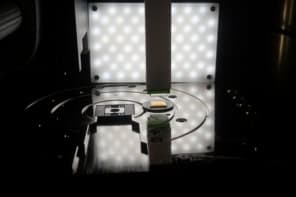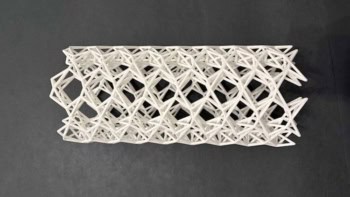Seven Elements That Have Changed the World
John Browne
2013 Weidenfeld and Nicolson £20.00hb 304pp

Picking the seven chemical elements that have done most to change the world sounds like a fantastic science parlour game. And with 80 stable and 38 (so far) unstable elements in the periodic table to select from, the choice might appear far from straightforward. Not so for John Browne, former chief executive of oil giant BP, who seems to have lost little sleep in selecting his top seven elements – the historical, social, scientific and economic significance of which he describes in Seven Elements That Have Changed the World.
Three elements seemed obvious to Browne from the outset: carbon, iron and silver. Carbon, of course, has powered industry through oil and coal, while iron is the ultimate building material. Silver’s influence is perhaps more subtle: it makes Browne’s list because it made photography possible. As for the remaining four elements, Browne picked these by digging out his old school copy of the periodic table, scanning the list and plumping for gold, uranium, titanium and silicon. Gold, he explains, has underpinned trade and motivated colonial expansion. Uranium led to nuclear energy and the Cold War, while silicon’s uses have stretched from glass mirrors and lenses to transistors and solar cells. Titanium is, for me, an odd choice, and I’ll come back to that later, but Browne has no such qualms: “Time and again, while writing this book,” he explains, “these seven elements stood out as having most powerfully changed the course of human history.”
Browne devotes a chapter to each element but it is his discussion of silicon that is by far the strongest and most interesting part of the book. He begins by looking at the glass-making prowess of the Venetians, who in the 17th century were so desperate to protect their trade that they threatened to kill any glassblowers who took their skills elsewhere. Glass windows were such a convenient form of taxation on wealthy homeowners that a window tax remained in place in Britain until 1845 – and is, Browne claims, the origin of the term “daylight robbery”. The removal of that tax led to a boom in the British glass industry, and the 1851 Great Exhibition at London’s Crystal Palace, which was built from 3300 iron columns and 300,000 panes of glass, showed just how versatile this material could be.
Of course, silicon also underpins more recent wonders, and Browne does a fine job at detailing its use in solar cells and transistor-based integrated circuits, infusing his descriptions with some interesting personal perspectives. As a fresh-faced employee at BP in 1970, for example, Browne was one of the first people in the oil industry to use computers to model the location of petroleum reserves in the Alaskan oilfields. Today, drilling for oil without computers is unimaginable, but back then computer-aided drilling was a much harder exercise, with computers literally crashing when their spinning disks ground to a halt. As the author points out, computers have advanced so much since then that a modern smartphone has more computing power than the whole of NASA did in the late 1960s.
The inclusion of titanium is, for me, the weakest of Browne’s choices. Discovered in 1791, it only rose to fame after the Second World War when a commercial process to extract titanium from its ore was developed. Dubbed a wonder material on account of being extremely strong, light but resistant to corrosion, titanium was used by the Americans in the Cold War to make the famous Blackbird spy plane, while the Soviet Union even manufactured a submarine built entirely from this non-magnetic material.
Yet, as Browne rather forlornly admits, titanium as a metal never lived up to its potential. It is 10 times more expensive to make than steel, and production of titanium today is barely one-thousandth of the level of its rival, being restricted to specialist areas such as limb implants, tennis rackets and oil rigs. Yes, titanium – in the form of nanoparticles of titanium dioxide – is also a key ingredient in sun cream and is used as a whitening agent in foods, paint and toothpaste, but as Browne himself writes, “today titanium has a limited role”.
Perhaps for this reason, Browne devotes just 12 pages to this element, followed by silver (19 pages), uranium (25), iron (28), gold (30), silicon (33) and carbon (56). The chapter on carbon strays too much into the economics of the oil industry for my taste, while those on gold and silver are well researched but occasionally read, dare I say, like Wikipedia entries. As for uranium, Browne covers all the bases – from Hiroshima and the arms race to Chernobyl and Fukushima – without saying anything stunningly new.
Although the book is as much about economics and history as it is about science, when Browne does get into the physics and chemistry of the seven elements, he has a real knack for clear scientific descriptions. That is perhaps not surprising: Browne did, after all, study physics at the University of Cambridge in the 1960s. It is therefore disappointing that so much science is booted into the extensive 43 pages of footnotes at the end of the book. In fact I found myself constantly flicking back and forth between the main text and the footnotes (of which there are almost 500). Where did this trend for vast numbers of footnotes come from? And do we really need to flip to the end to learn nothing more than “viscosity is the friction between molecules in a liquid”?
Selecting seven elements about which to write a book is unlikely to have been the toughest choice Browne has ever faced in his long career. In fact, the ability to make clear decisions – and stick by them – is probably a pre-requisite for being top dog at one of the world’s biggest energy firms for a dozen years. Still, I felt Browne could have done more to justify his choices – why do, say, copper, zinc or technetium not make the cut? What about aluminium, hydrogen or germanium?
Anyone keen, as I was, to find out more about Browne himself through this book will have slim pickings, although he does reveal a life-long passion for photography, including a set of Leica cameras, and – bizarrely – a collection of more than 100 toy glass elephants. In the end, though, I was won over by Browne’s enthusiasm and I was sorry when the book finished, leaving me wanting to read more. It would be hard to imagine many business leaders writing a book as interesting, accessible and well researched as this one.



